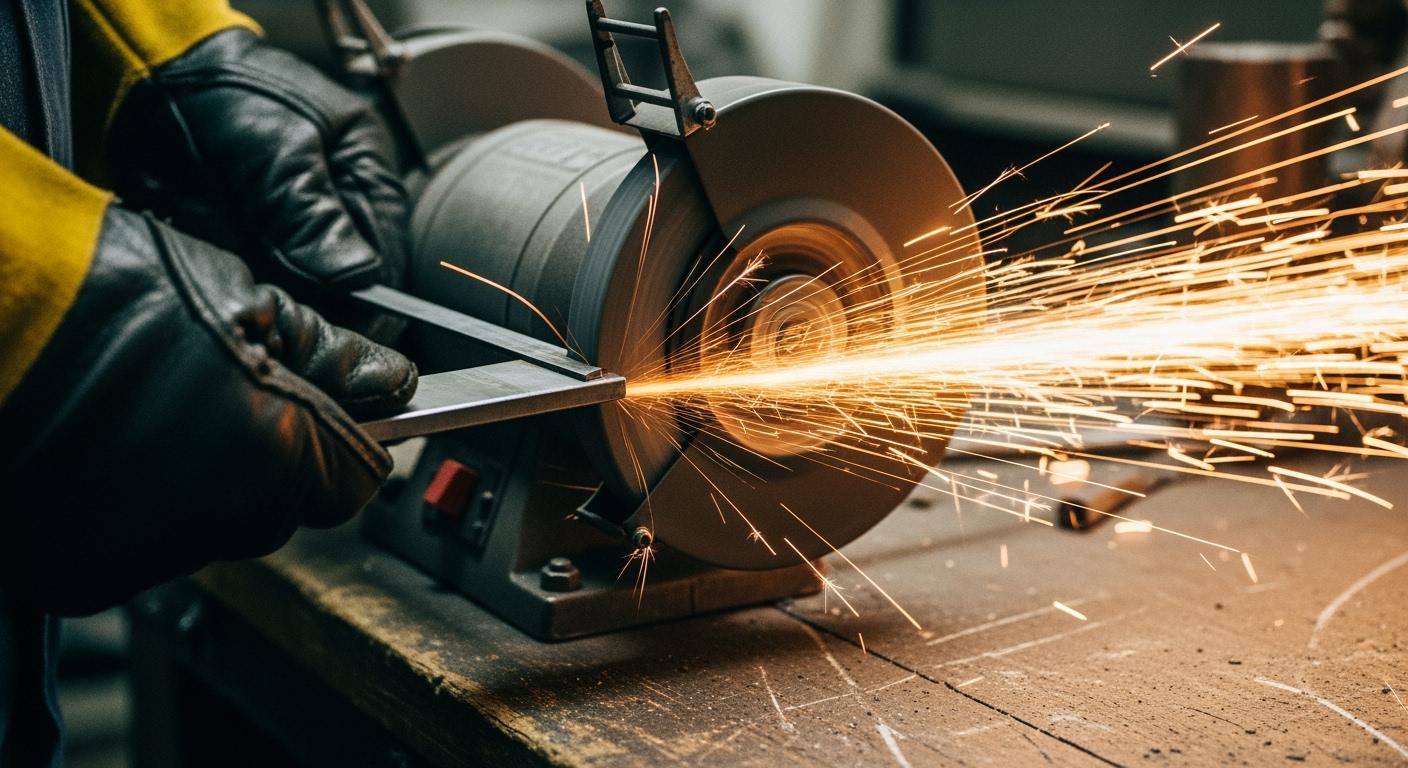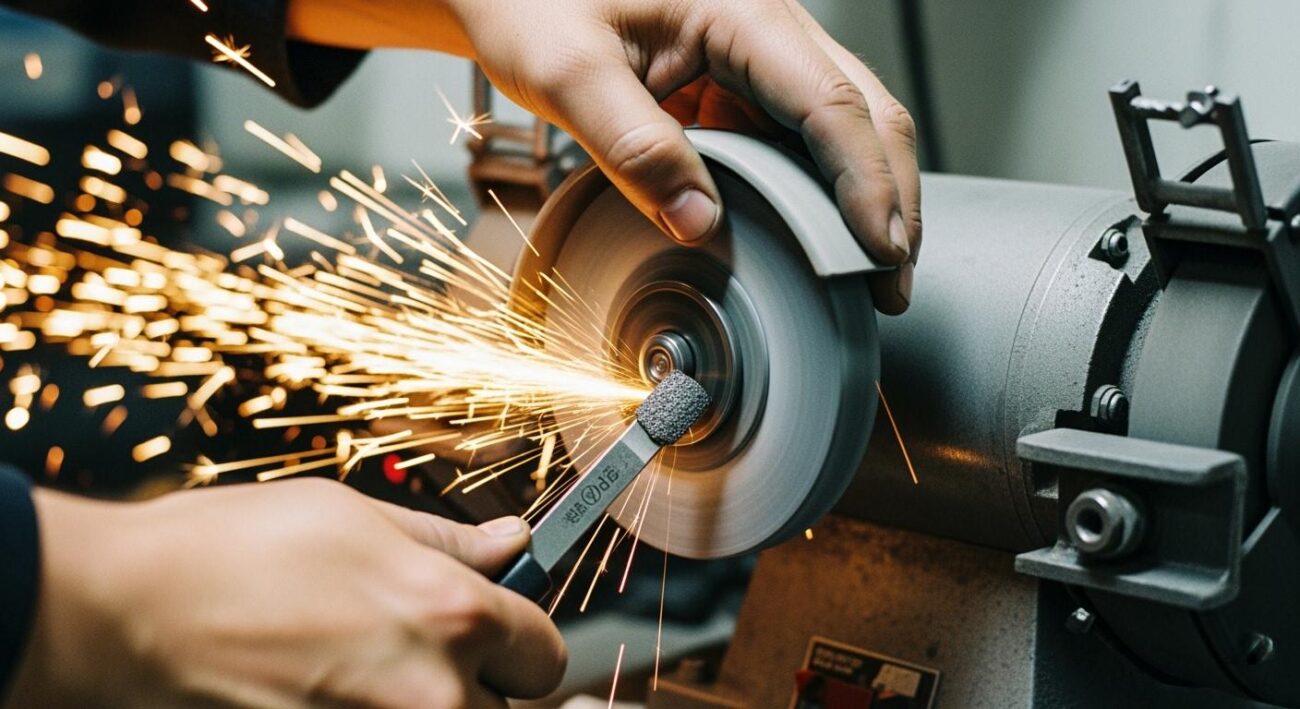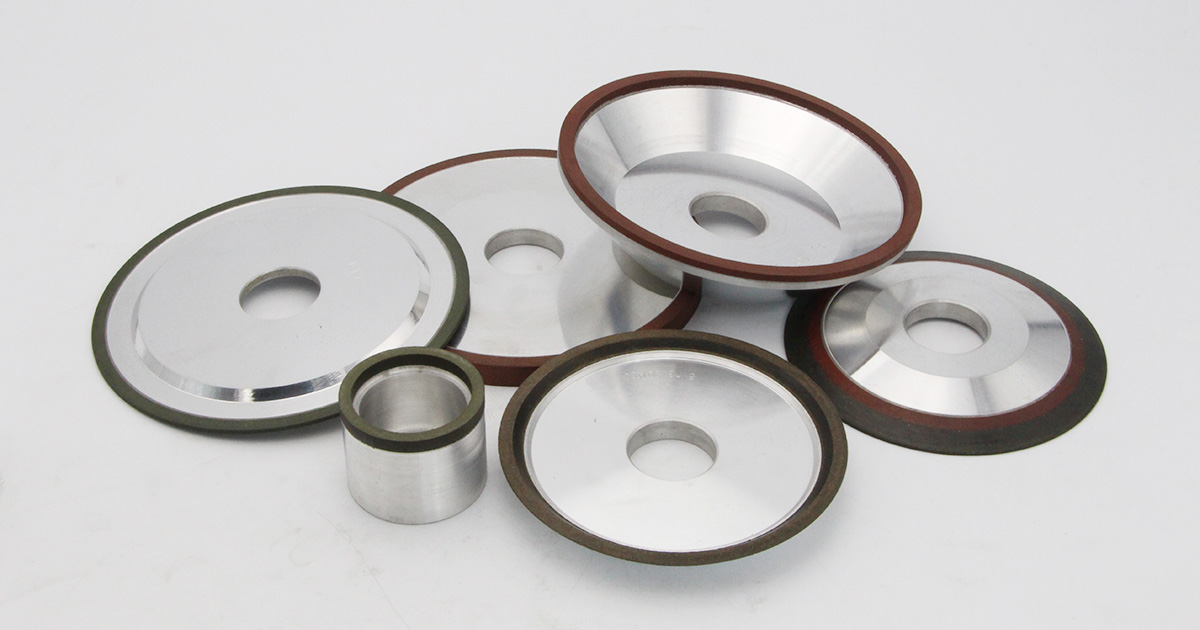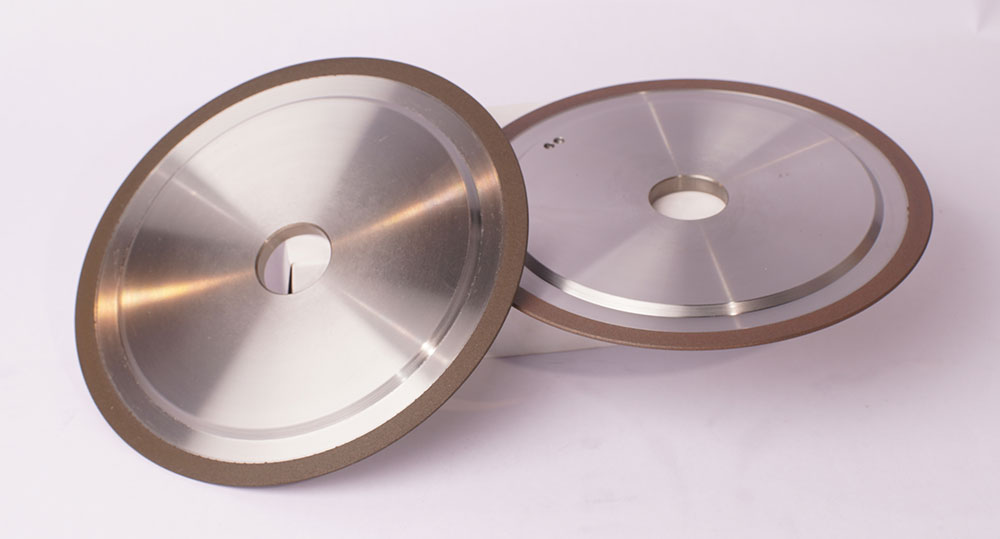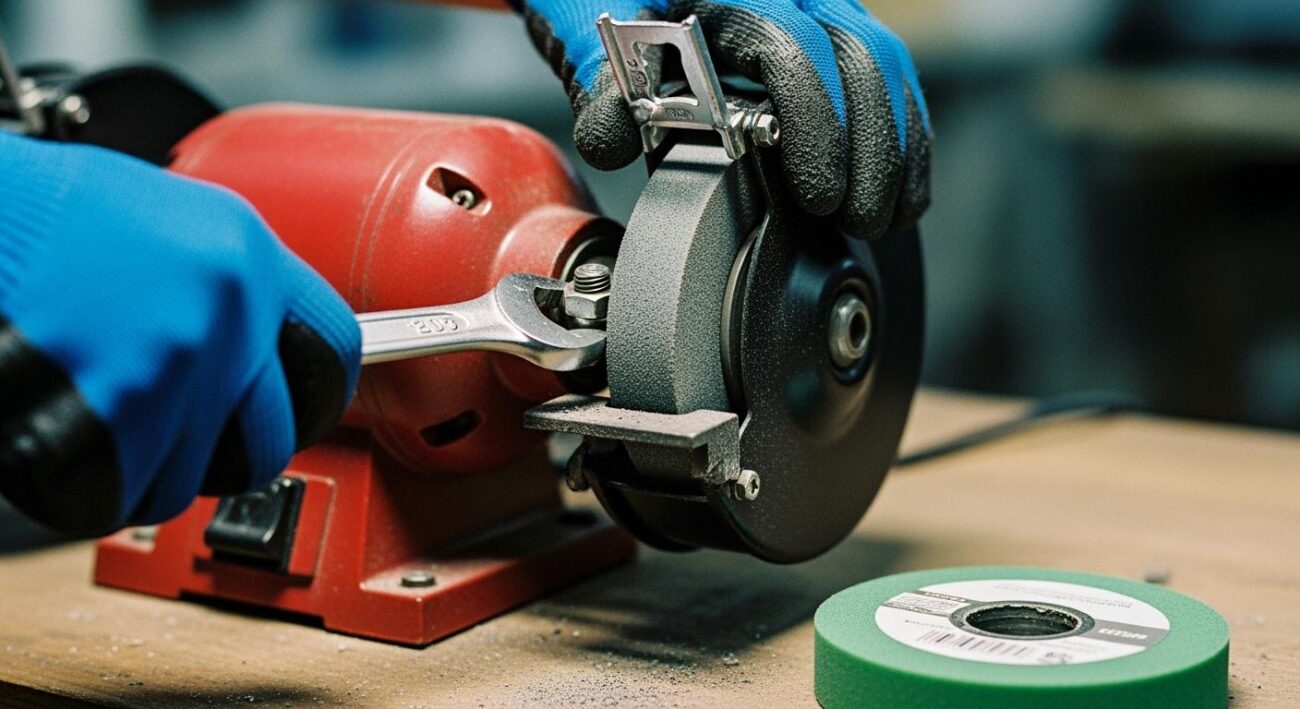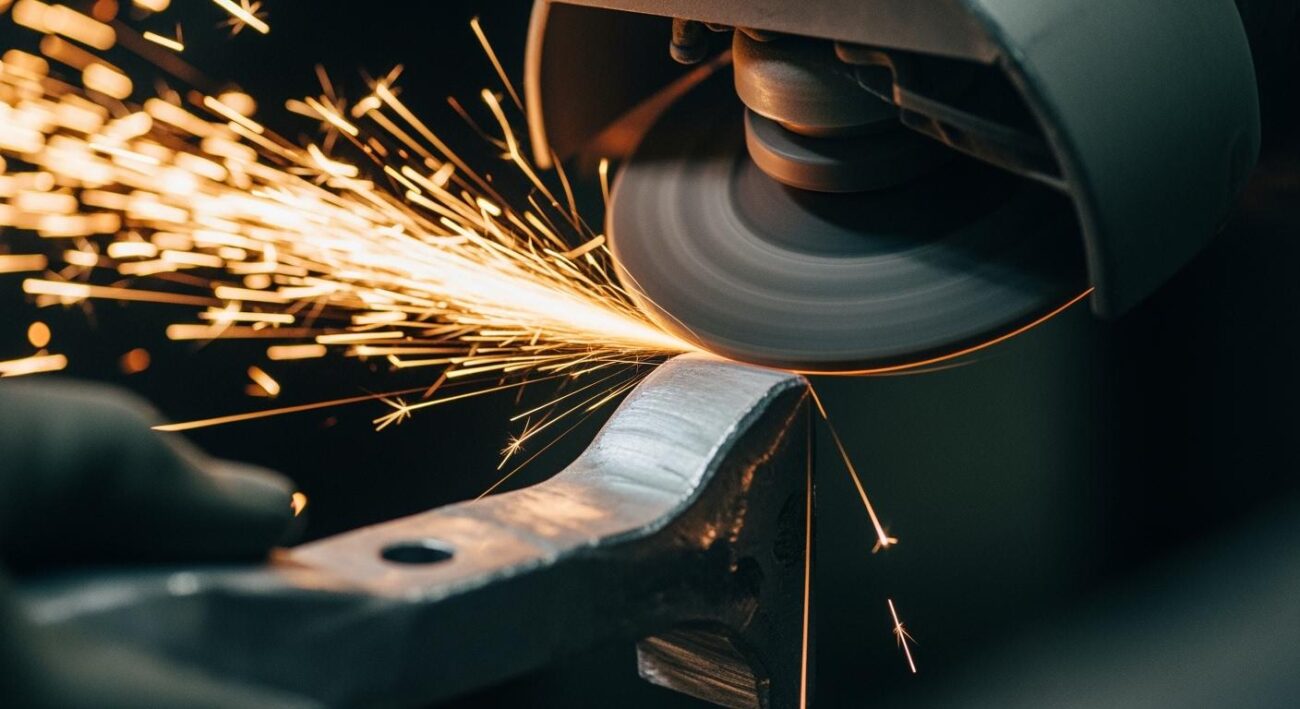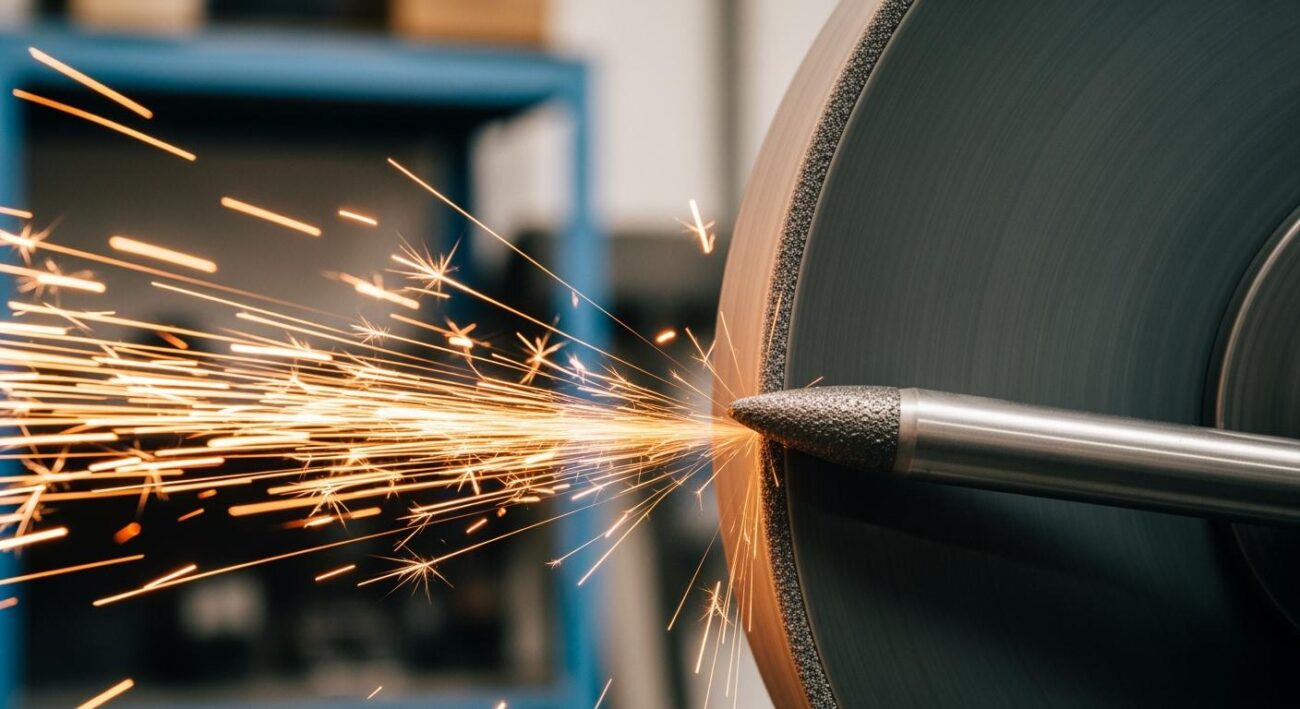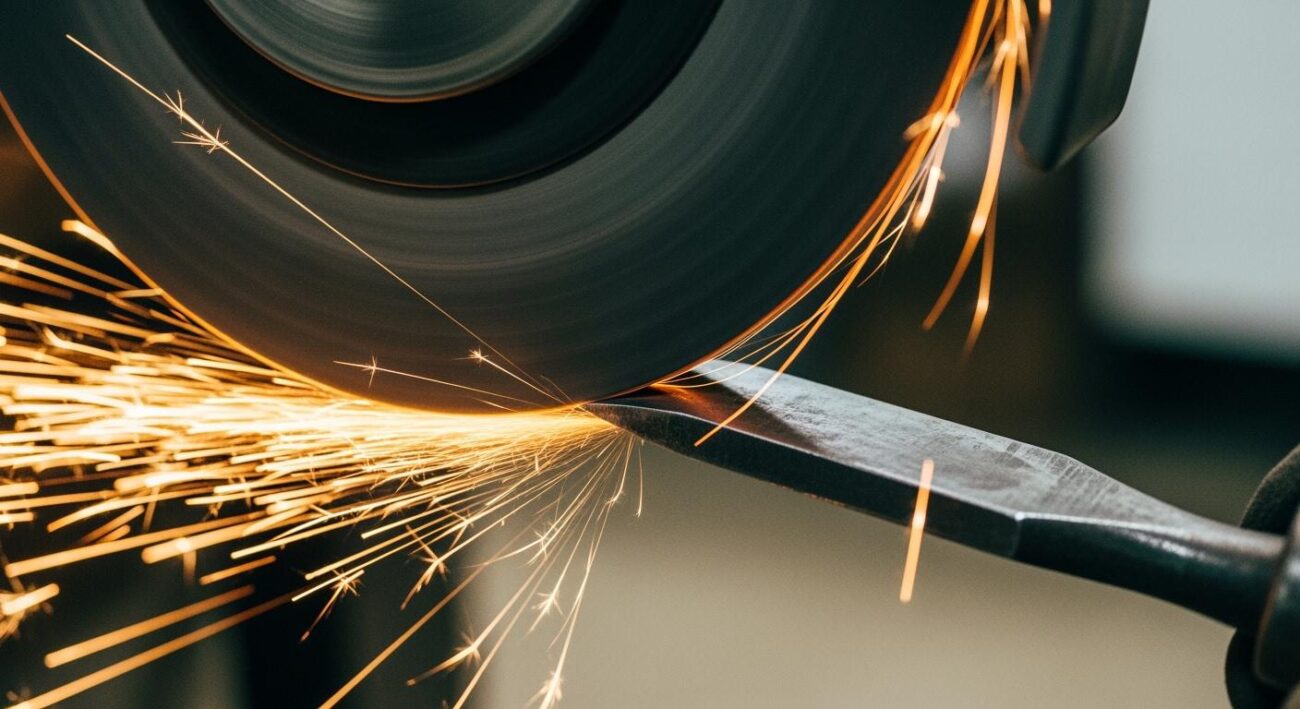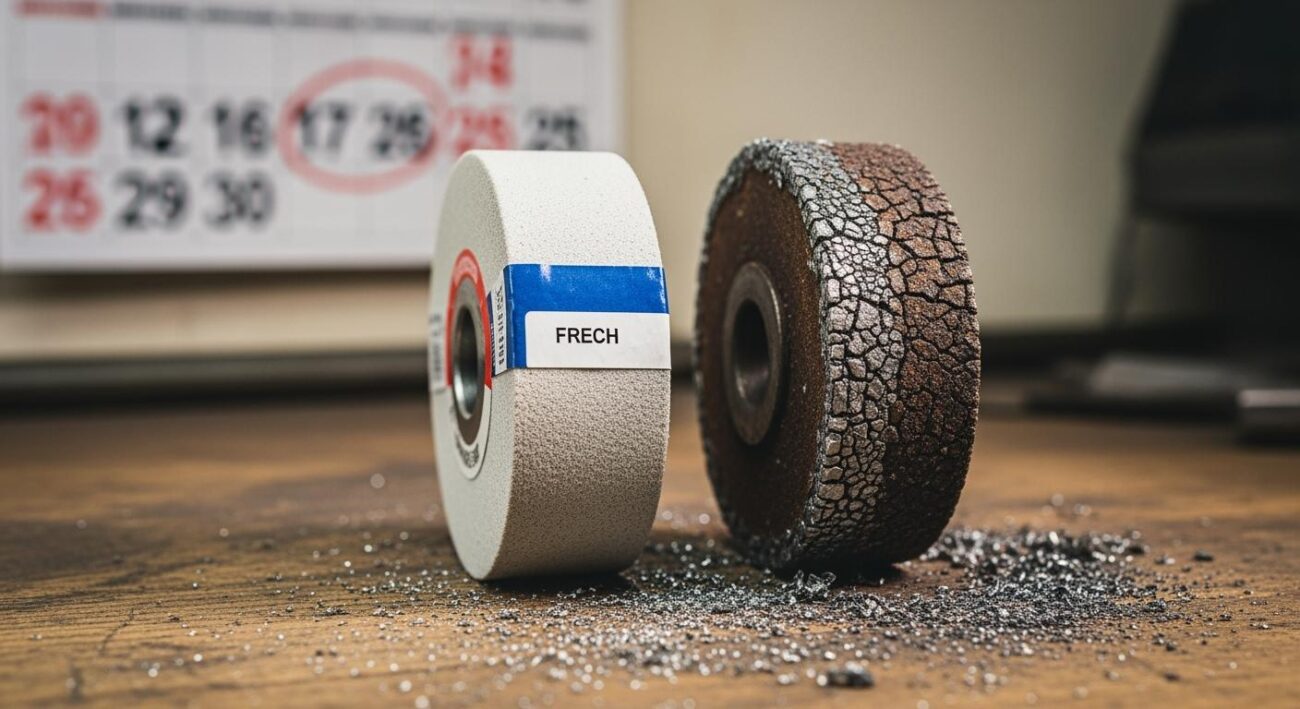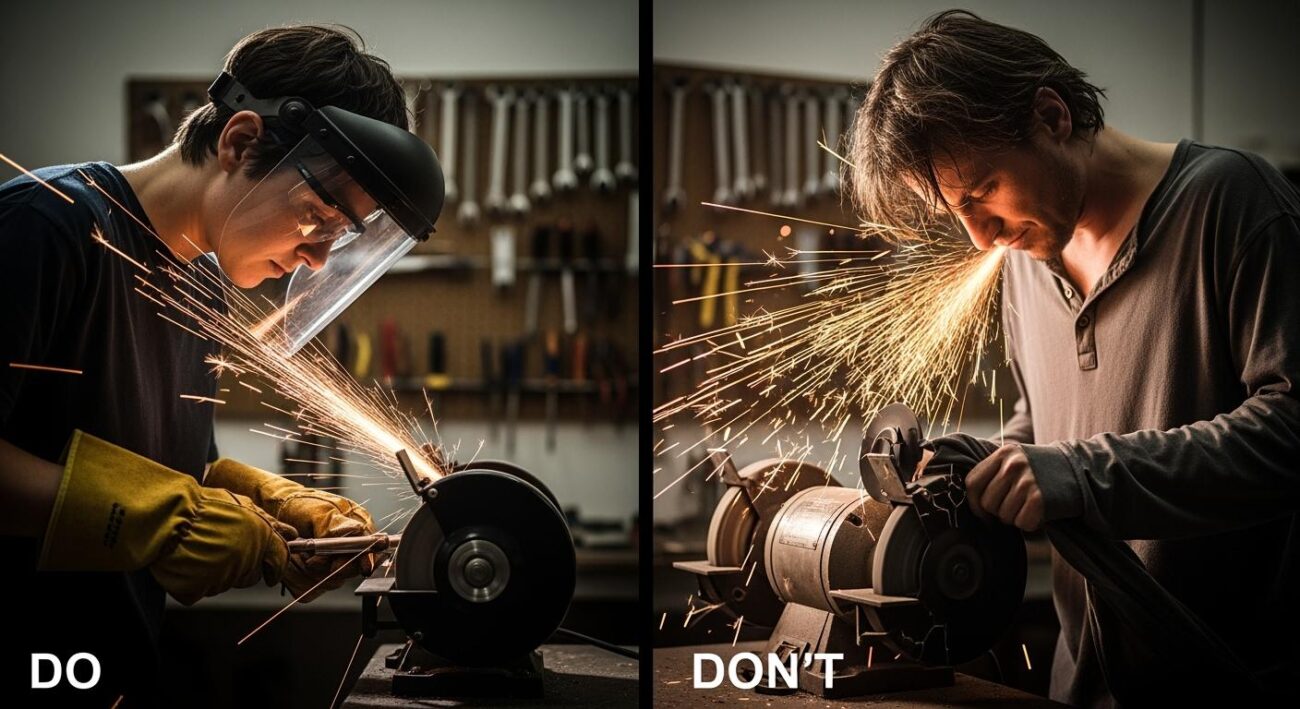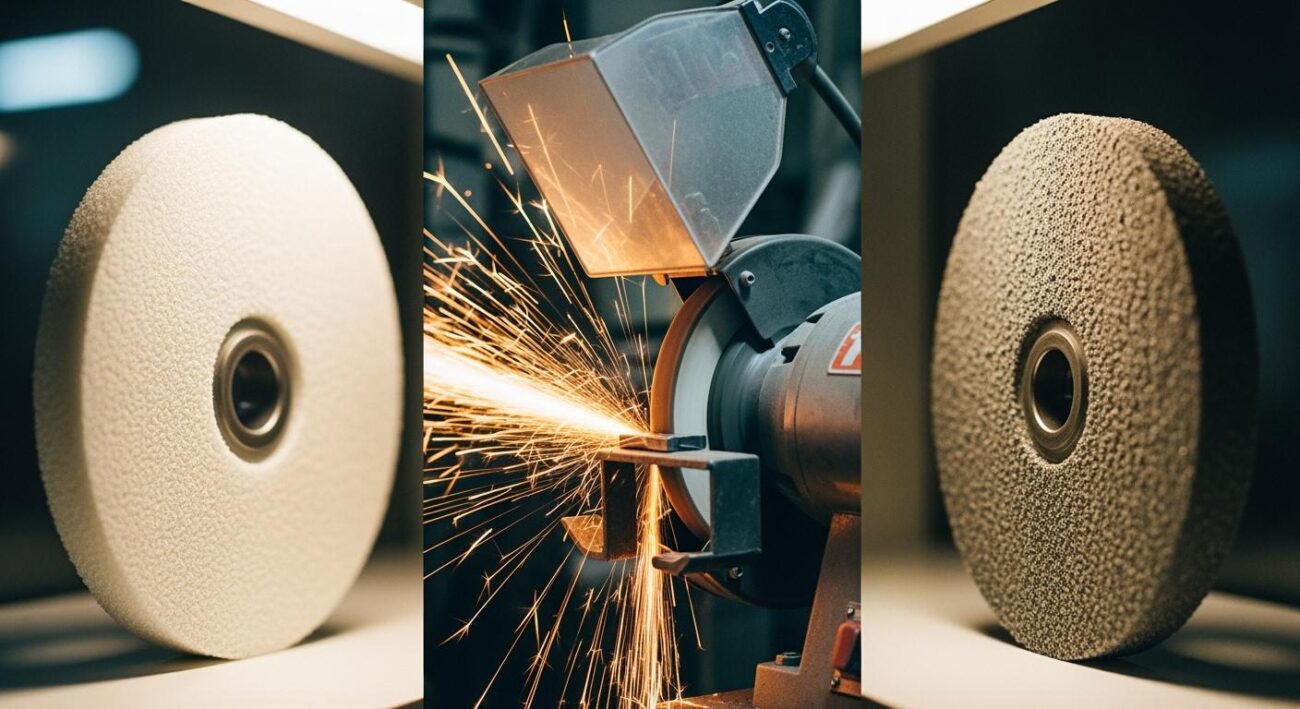No. You should never grind on the side of a standard bench grinding wheel. This practice is extremely dangerous and can lead to severe injury.
These wheels are designed to handle pressure only on their outer face. Applying force to the side creates immense lateral stress. This stress can cause the wheel to shatter into sharp, fast-moving pieces. Your safety is the top priority.
Key Takeaways
- Never grind on the side of a standard grinding wheel. It is very dangerous and can cause the wheel to explode.
- Standard grinding wheels are only made to handle pressure on their outer edge. Side pressure can break them apart.
- Use special wheels for side grinding. These wheels have extra strength inside to prevent them from breaking.
- Always wear safety glasses and other protective gear. Inspect your wheel for damage before you use it.
- Match the grinding wheel to your task. Make sure the wheel’s speed rating is correct for your grinder.
The Dangers of Side Grinding
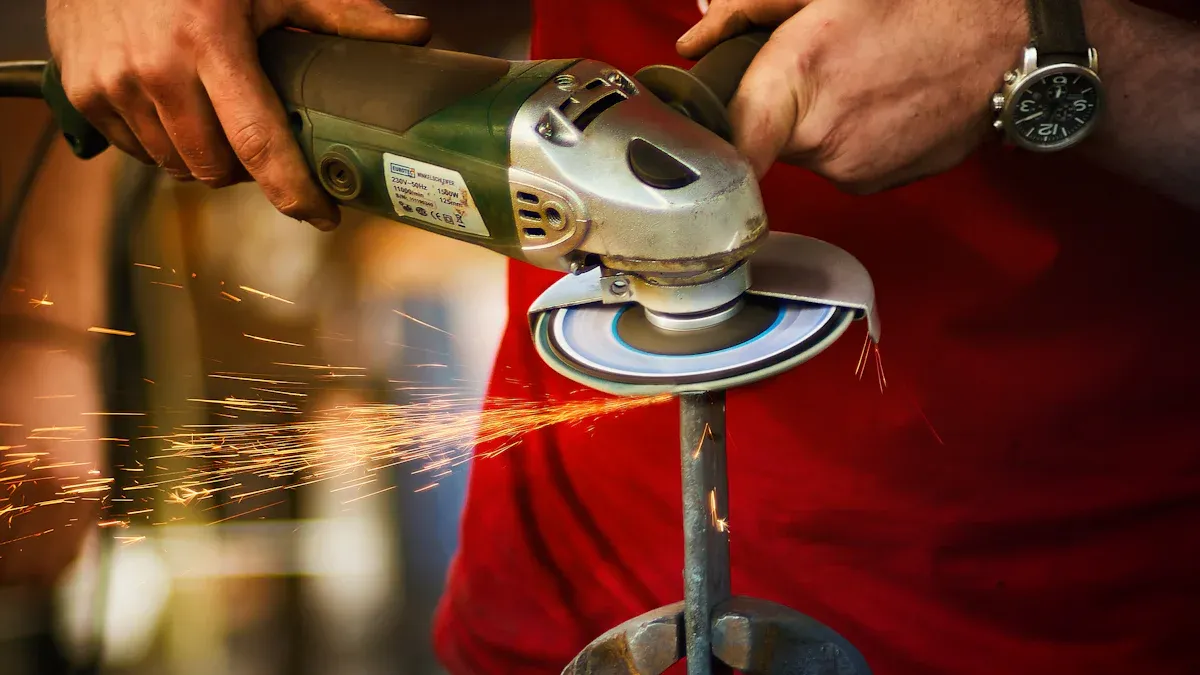
You might be tempted to use the side of a grinding wheel for a quick deburring or flattening job. This is a critical mistake. Standard wheels are not built for this kind of pressure. Understanding the physics and design limitations reveals why this practice is so hazardous.
The Risk of Catastrophic Failure
A standard bench grinding wheel is made of a vitrified (glass-like) bond. This material is very strong under compression but extremely brittle under tension. When you grind on the wheel’s face (periphery), you apply compressive and shear forces that the wheel can handle.
However, when you press a workpiece against the flat side of the wheel, you introduce powerful lateral (sideways) forces. This pressure creates immense tensile stress, essentially trying to pull the wheel apart from its center. The wheel is not designed to withstand this pulling force. The result can be a sudden, explosive shattering of the wheel.
⚠️ Warning: Explosive Force
A wheel failure is not a simple crack. It is a violent explosion. Fragments can be ejected with a rim speed of approximately 9,000 feet per minute—faster than a bullet from some handguns. A guard must be strong enough to contain these projectiles, but you should never test its limits.
The potential for injury is severe and life-altering. Accidents involving wheel failure have led to devastating outcomes.
| Injury Type |
|---|
| Struck by fragments from a broken grinding wheel |
| Employee killed when grinding wheel disintegrates |
| Loss of right eye (unguarded wheel shattered) |
| Employee’s finger amputated by grinding wheel |
| Employee disfigured when struck by grinding wheel |
The data on these accidents paints a grim picture of the risks involved.

Standard Grinding Wheel Limitations
The design of a bench grinder’s mounting system is built around one purpose: supporting the wheel for grinding on its face. This system includes two key components:
- Flanges: These are the metal discs on either side of the wheel. They clamp the wheel securely to the spindle. Their job is to distribute the mounting pressure evenly, but they are designed to support radial loads—the forces created during peripheral grinding. They offer very little support against the side-to-side pressure of side grinding.
- Paper Blotters: These are the paper or cardboard rings between the flanges and the wheel. They act as cushions, compensating for any minor imperfections on the flange or wheel surface to ensure even pressure distribution away from the bore (the center hole).
This entire assembly creates a rigid system for radial grinding. It is not designed to handle lateral stress. Safety standards from organizations like OSHA are clear for this reason.
Safety Guideline:
Always avoid grinding on the side of the wheel. This common practice can cause the wheel to shatter, leading to serious injury or death.
Using the side of a standard wheel undermines its entire structural integrity and puts you in the direct path of a potential explosion.
Specialized Wheels for Side Grinding
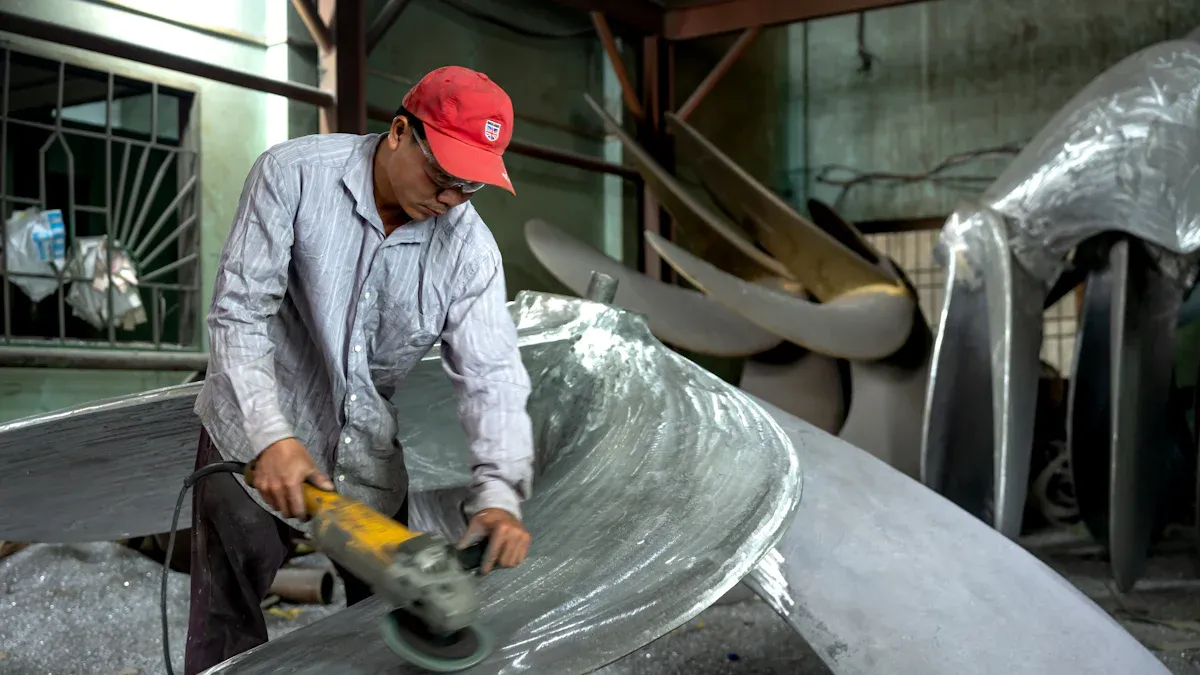
While you must never use a standard wheel for side grinding, some jobs require it. Manufacturers have engineered specific wheels to handle these lateral forces safely. You just need to know how to identify them and what makes them different. These specialized wheels open up new possibilities for shaping and finishing your workpieces.
Identifying Wheels Rated for Side Loads
You can find wheels specifically designed for side grinding. These are not your typical flat-sided bench grinder wheels. They are clearly marked and constructed for this purpose. Always check the wheel’s label or the manufacturer’s specifications. If it does not explicitly state it is safe for side grinding, do not use it for that task.
Common types of wheels that often permit side grinding include:
- Type 27 (Depressed Center) Wheels: You will frequently see these on angle grinders. The depressed center allows the locking nut to sit below the grinding surface. This design is perfect for grinding on flat or contoured surfaces. Their applications are quite versatile.
- Metal and Stainless Steel: Ideal for smoothing welds and finishing metal surfaces.
- Masonry Grinding: Effective on materials like brick, block, and stone.
- Concrete Surfaces: Used for both cutting and light grinding on concrete.
- Type 11 (Flaring Cup) Wheels: These cup-shaped wheels have a large grinding surface on their rim. You will find them used for heavy-duty surface grinding and cleaning on concrete or metal.
- Specialized Bench Grinder Wheels: Some manufacturers produce wheels for bench grinders that are rated for light side grinding. These are less common and must be clearly identified as suitable for side loads.
Specialized Wheel Construction
Specialized wheels can handle side pressure because of one key feature: internal reinforcement. Unlike standard vitrified wheels, these are built with layers of high-strength material, typically fiberglass mesh. This reinforcement acts like a skeleton inside the wheel, giving it the tensile strength to resist shattering from lateral forces.
This internal mesh provides several key benefits:
- High Strength and Durability: Fiberglass gives the wheel excellent tensile strength. It helps the wheel flex slightly under pressure instead of breaking.
- Heat Resistance: The mesh can withstand the high temperatures created during grinding. This helps the wheel maintain its structural integrity.
- Enhanced Safety: Reinforcing a grinding wheel with fiberglass dramatically reduces the risk of a catastrophic failure during side grinding operations.
Manufacturers use different levels of reinforcement depending on the wheel’s intended use. A stronger reinforcement is necessary for more severe applications.
Note: Reinforcement Levels
The amount of internal fiberglass mesh determines the wheel’s strength. Options range from single internal layers for light work to dual external layers for the most demanding jobs. This construction is what makes side grinding possible and safe with the correct wheel.
Aimgrind Diamond Wheels for Precision Tasks
For high-precision work on extremely hard materials, you need an even more advanced solution. This is where high-performance diamond wheels excel. While many are designed for peripheral grinding, certain types are engineered for precision side-grinding applications on materials that conventional abrasives cannot handle effectively.
Using a diamond grinding wheel offers significant advantages for these demanding jobs:
- Exceptional Hardness: Diamond is the hardest known substance. This allows it to efficiently grind tough materials like tungsten carbide, hardened steels, and advanced ceramics.
- Excellent Thermal Conductivity: Diamond pulls heat away from the workpiece very quickly. This minimizes the risk of thermal damage like cracks or burns, which is crucial when working with heat-sensitive materials.
- Longevity and Wear Resistance: Diamond’s hardness means the wheel wears down very slowly and evenly. This gives you a longer wheel life, less downtime for changes, and highly consistent results.
When your project demands the highest level of precision and a superior finish, a specialized diamond wheel is an invaluable tool. However, matching the right wheel to your material and application is critical. For tasks involving hard alloys or ceramics, you should consult with experts. The team at Aimgrind can help you select a diamond grinding wheel from their extensive catalog that is perfectly suited for your specific side grinding needs, ensuring both safety and optimal performance.
Universal Grinding Safety Rules
Whether you are using a standard or specialized wheel, safety is non-negotiable. You must follow universal rules to protect yourself from injury. These practices ensure your equipment operates correctly and you stay safe during every job.
Match the Wheel to the Application
You must choose the right wheel for your specific task. Using the wrong one can lead to poor results and dangerous failures. Common mistakes include:
- Using the wrong abrasive type for the material (e.g., aluminum oxide vs. diamond).
- Choosing a bond that is too hard or soft for the job.
- Not matching the wheel to the specific grinding operation.
Speed is also a critical safety factor. The RPM (Revolutions Per Minute) rating on the wheel must be equal to or higher than the RPM of your grinder.
– Do the grinder rpm’s and grinding wheel rpm match?
Always choose an abrasive which matches the rpm speed of the tool. Never put a larger wheel with a low RPM rating on a smaller, high-RPM grinder. The extreme force could cause the wheel to explode.
Mandatory Personal Protective Equipment
You must always wear proper Personal Protective Equipment (PPE). OSHA requires specific gear for grinding. Your eyes need protection from flying debris. Always wear safety glasses or a full face shield that meets ANSI Z87.1 standards.
You also need to protect your lungs from harmful dust. The right respirator depends on the material you are grinding.
| Material Being Ground | Recommended Respirator |
|---|---|
| Steel Components | FFP2 Respirator |
| High-Alloy Steels | FFP3 Respirator |
| Silica Dust | NIOSH-approved N95 or better |
Inspecting Your Grinding Wheel
You should inspect every wheel before you mount it. A damaged wheel can fail unexpectedly. First, look for visible damage like cracks, chips, or uneven wear. A shiny or glazed surface means the wheel is loaded and needs to be discarded.
Next, perform the “ring test” on any new vitrified wheel to find hidden cracks.
- Make sure the wheel is dry and clean.
- Suspend the wheel through its center hole.
- Gently tap the side with a nonmetallic handle, like a screwdriver.
- A healthy wheel will make a clear ringing sound. A dull thud means the wheel is cracked and unsafe.
Proper Use of Guards and Tool Rests
Your grinder’s guards are essential safety features. Never operate a grinder without them. The side guards must cover the spindle, nut, and most of the wheel. You must also correctly adjust the tool rest and tongue guard.
- Tool Rest: This supports your workpiece. Keep the gap between the rest and the wheel face at 1/8-inch or less. This prevents the workpiece from getting jammed.
- Tongue Guard: This helps contain sparks. Adjust it to within 1/4-inch of the wheel.
Check these gaps often and adjust them as the wheel wears down.
The answer remains a firm no. You must only use the outer face of a standard grinding wheel unless it is specifically made for side grinding. The risk of a wheel shattering is too high to justify any shortcut.
Your Safety Checklist:
Always prioritize your safety. Before any job, check the manufacturer’s specifications, often found in product catalogues. Ensure your machine’s speed does not exceed the wheel’s rating. Finally, always wear your required personal protective equipment (PPE). Using tools correctly is the best way to prevent injury.
FAQ
Why can’t I use the side of a standard wheel?
You should never use the side of a standard wheel. These wheels are not built for side pressure. Applying force to the side creates stress that can make the wheel shatter violently, causing serious injury.
How do I know if a wheel is safe for side grinding?
You must check the wheel’s label or the manufacturer’s specifications. Look for wheels clearly marked for side grinding, such as Type 27 (depressed center) or Type 11 (flaring cup) wheels. If it is not marked, do not use its side.
What is the “ring test” and why is it important?
The ring test helps you find hidden cracks in a new vitrified wheel. You tap the wheel gently. A clear ring sound means the wheel is safe. A dull thud indicates a crack, and you must discard the wheel immediately.
Why are diamond wheels good for certain side grinding tasks?
Diamond wheels are extremely hard and durable. They can precisely grind tough materials like carbide and ceramics without overheating the workpiece. For these specific jobs, you should consult an expert like Aimgrind to find the correct wheel.
Contact Us
For More Grinding Solution or Customized Abrasive Tools

